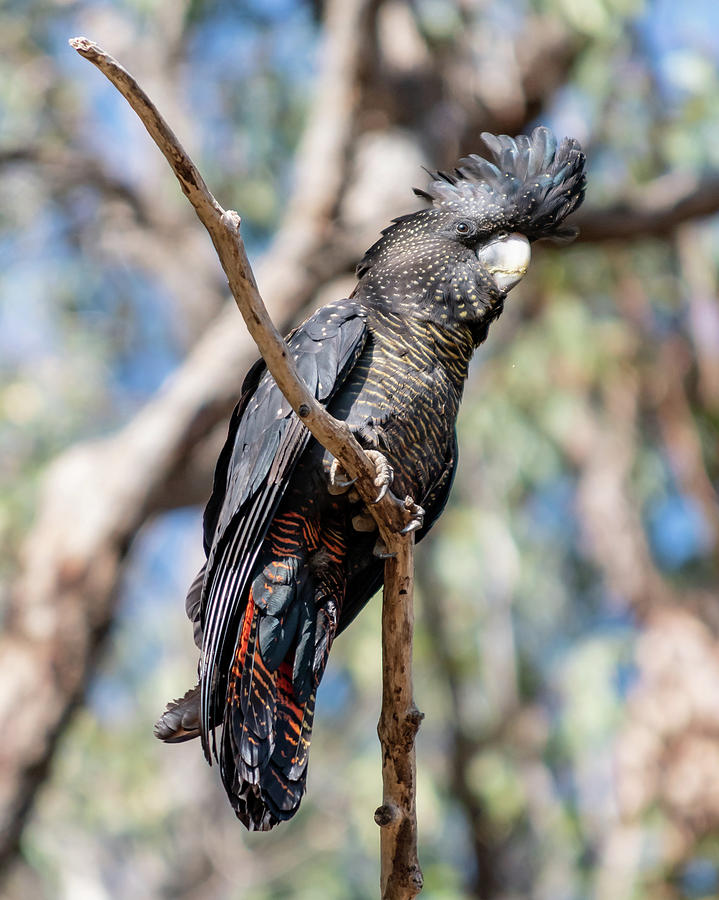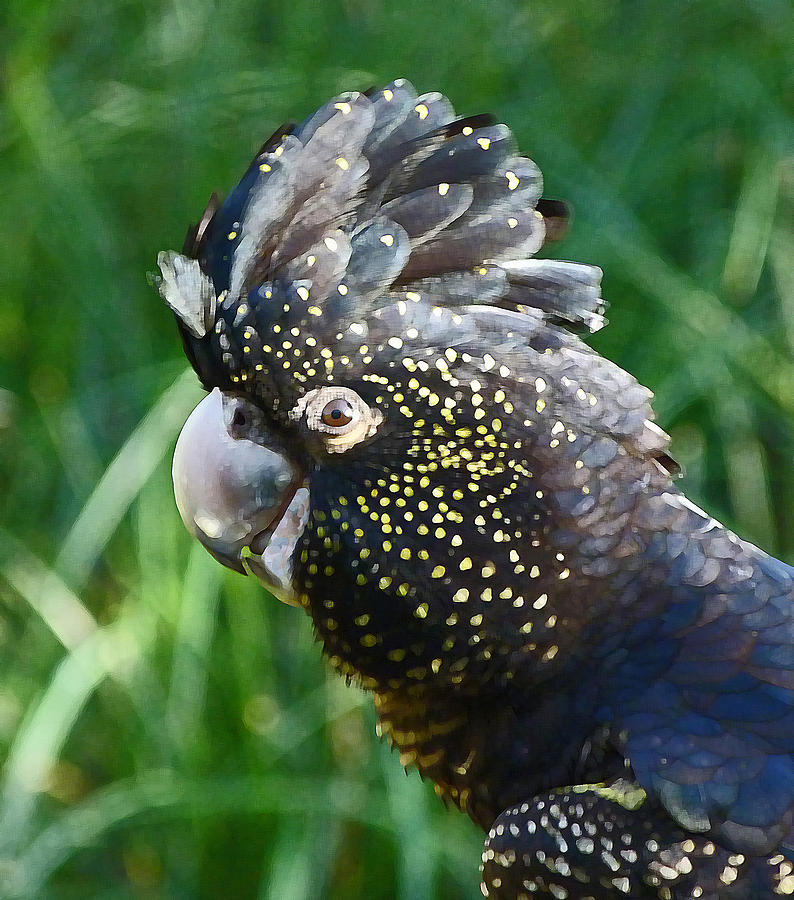

Male breeding call is a repeated mechanical “waa-waa”.

Loud harsh cries “Karee”, “Karrak” or “Krar-raak” also “chet” sounds and harsh nasal wheezing. Similar to female except for less pale yellow spots on head, cheeks and wings, dull pale yellow bars on breast and belly, outer tail feathers brightly barred with red or orange red (little or no yellow) and bill dark grey or blackish. Immature male Forest Red-tailed Black Cockatoo Glossy black, the head and wing coverts spotted with pale yellow breast and belly barred with orange-yellow tail narrowly banded with red and orange-yellow (more orange) on undertail coverts bill pale greyish white. Glossy black except for bright orange-red band towards tip of tail, bill dark grey or blackish. Only the south-western population naso is listed as Vulnerable. There are three subspecies of Red-tailed Black Cockatoo in Western Australia. It has declined due to destruction of forests and woodlands, also competition for nest hollows with native and exotic species and the impact of fire. Usually seen in pairs or small flocks, seldom large flocks (up to 200). It was formerly common, but is now rare to uncommon and patchily distributed over a range which has become markedly reduced. “Vulnerable: under Federal Environmental Protection and Biodiversity Conservation Act”. “Listed Vulnerable: Schedule 1 – Western Australian Wildlife Conservation Act”.

The south-western population naso (referring to its large bill) was named by John Gould in 1837. Pair of Forest Red-tailed Black Cockatoosĭownload Forest Red-tailed Black Cockatoo factsheet Other Names Forest Red-tailed Black Cockatoo Forest Red-tailed Black Cockatoo


 0 kommentar(er)
0 kommentar(er)
